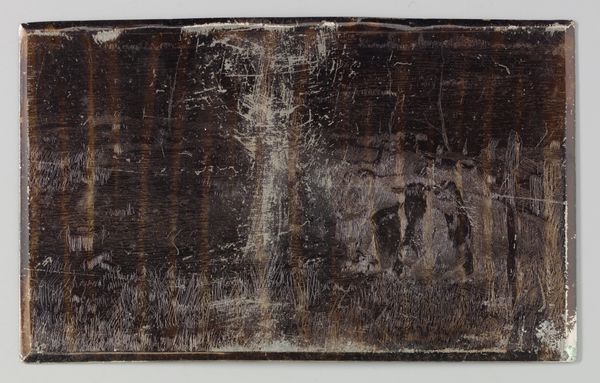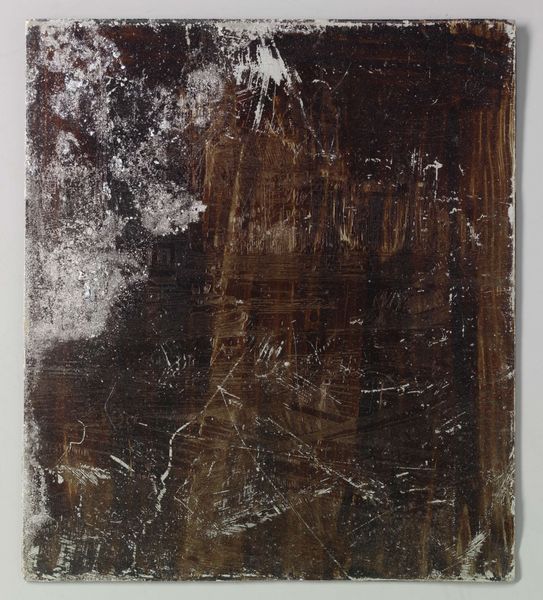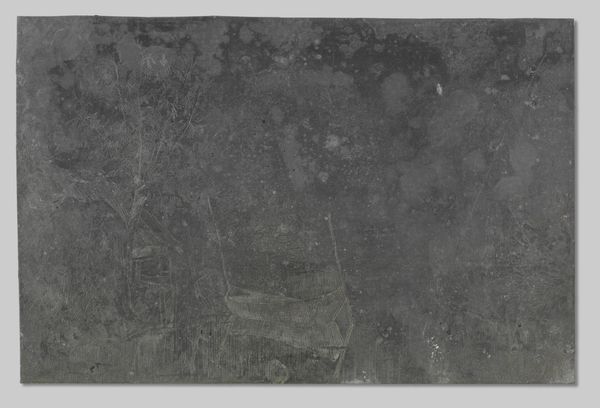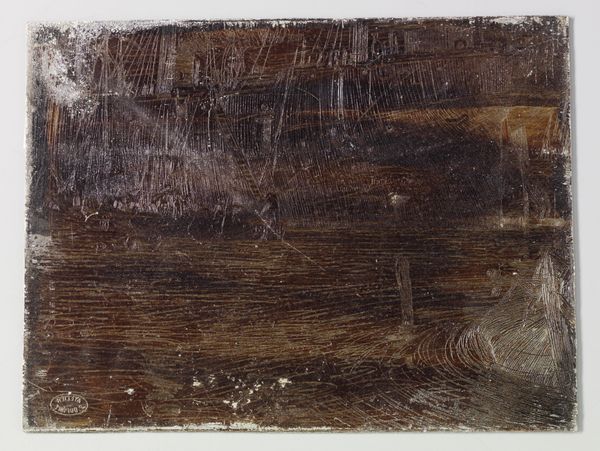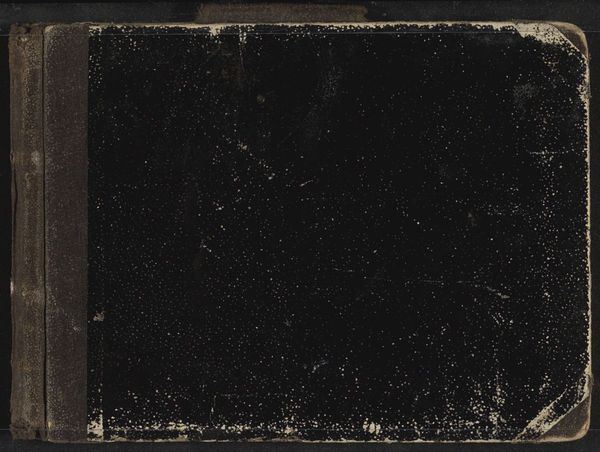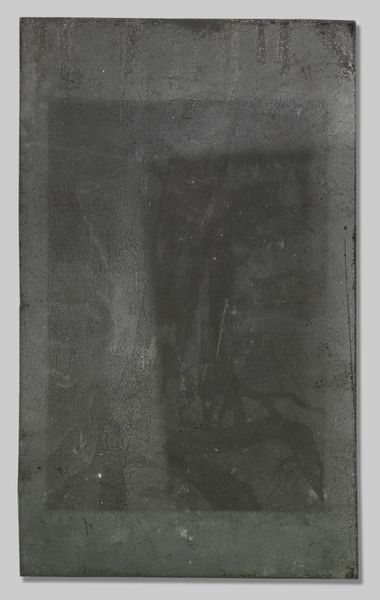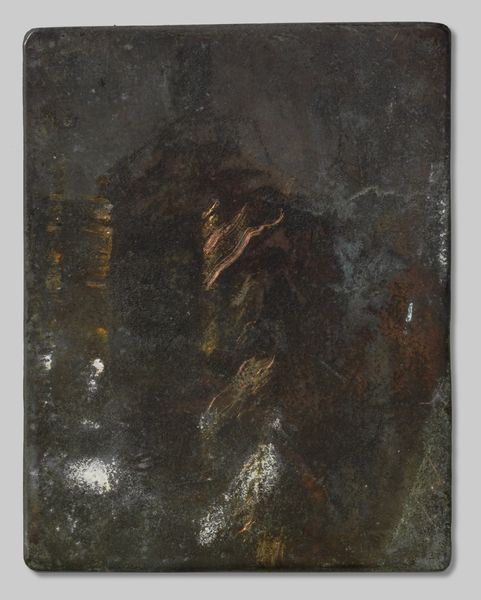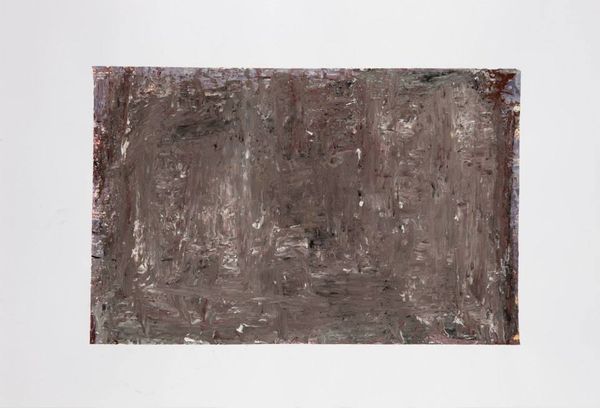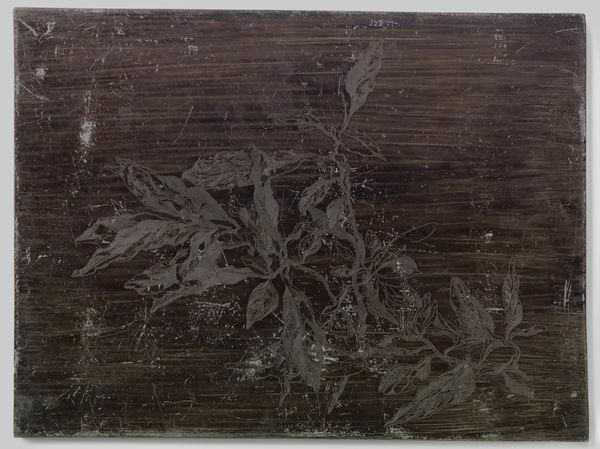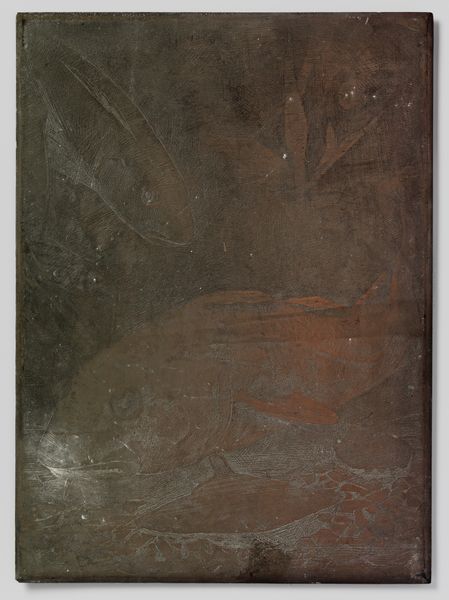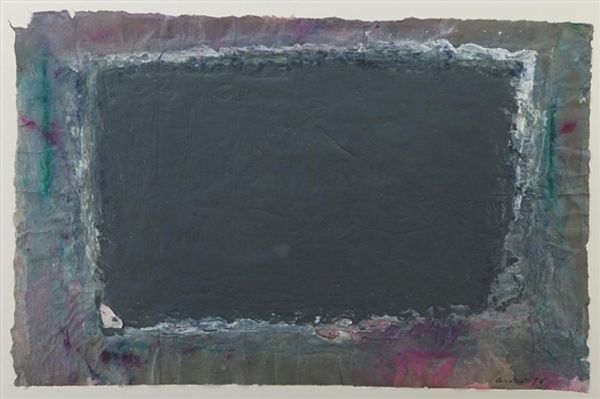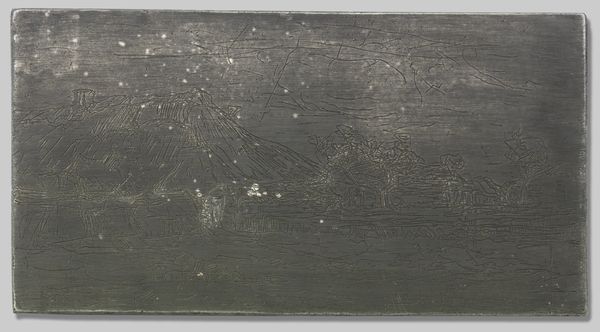
Dimensions: height 99 mm, width 14 mm
Copyright: Rijks Museum: Open Domain
Editor: Here we have "Vrouw in een landschap," or "Woman in a Landscape," created in 1888 by Jan Veth. It's a mixed-media painting currently held in the Rijksmuseum. The heavy impasto and dark tones give it a rather brooding, almost secretive feel. What strikes you most about it? Curator: It’s interesting to see how Veth, primarily known as a portraitist and critic, engages with landscape here. The impasto indeed creates a sense of texture and almost conceals the female figure alluded to in the title. This near-obscurity reflects a common Romantic trope: nature's overwhelming power and humanity’s smallness. I’d wonder how the contemporary exhibition culture influenced this choice. Did Veth see himself in conversation with established landscape painters? Editor: So, the woman isn't really the subject; it's more about her relationship to the landscape and perhaps nature's dominance? Was this a common theme in art at the time? Curator: Absolutely. Consider the rising urban-industrial landscapes and anxieties around modernity during the late 19th century. Presenting the female figure—often symbolic of fragility and the domestic sphere—within a dominating, natural setting could be interpreted as a subtle commentary on societal changes and their impact on traditional roles. Were Veth and his contemporaries questioning those traditional roles in his portraits as well? Editor: That's a fascinating connection. I never thought about the industrial context influencing landscape paintings this way. Curator: Exactly! Seeing art as embedded in these socio-political currents opens up a whole new layer of interpretation. Even seemingly simple landscapes can become powerful statements about their time. Editor: I see what you mean. This has totally shifted my understanding of the painting; I am not sure I see the 'brooding' anymore, now I sense there's commentary on how humans fit into their environments. Curator: Precisely! Considering that broader cultural backdrop makes us question and enrich our initial impressions.
Comments
No comments
Be the first to comment and join the conversation on the ultimate creative platform.
